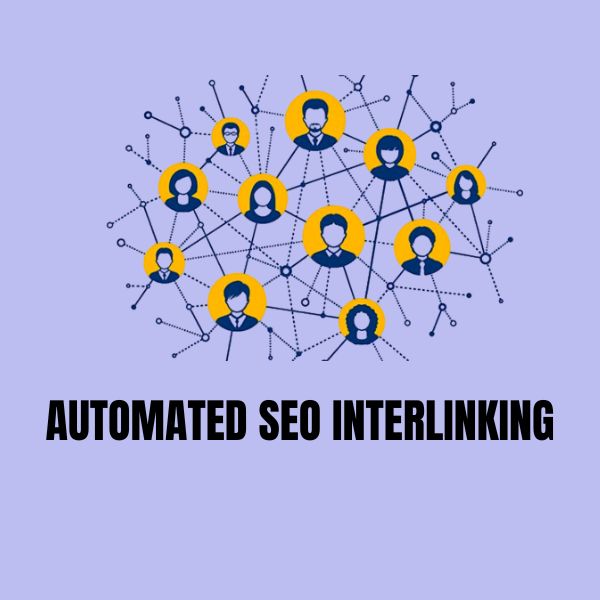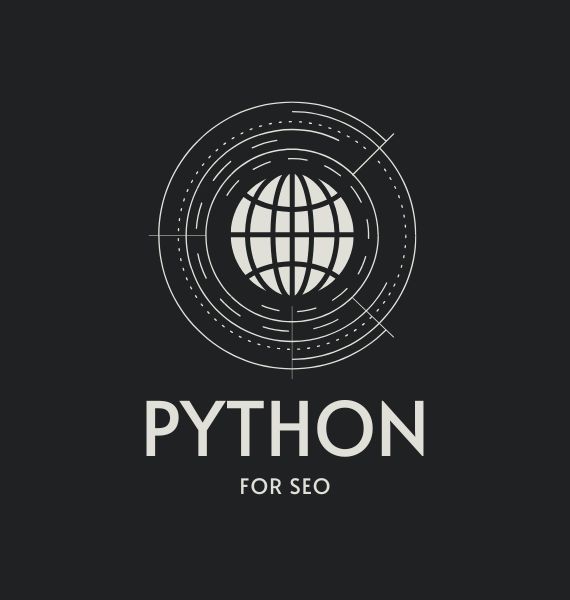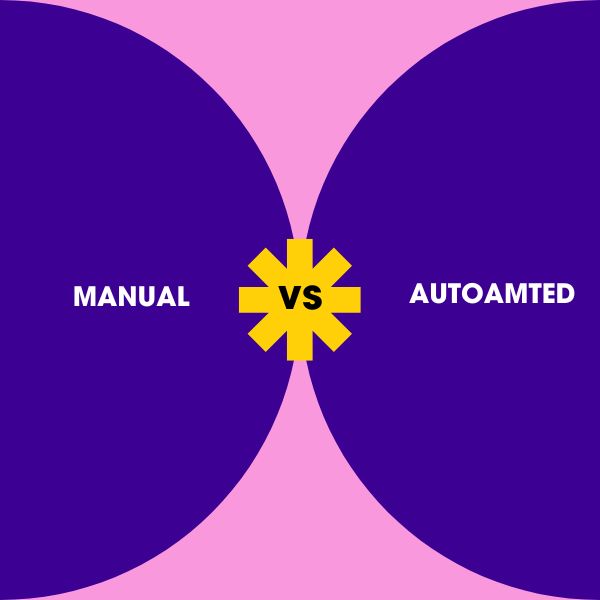The demand for a Python for SEO Course is growing. Many SEO professionals find Python helpful for automating tasks and analyzing data. Python has simple tools for automating SEO work, handling data, and collecting website information. It’s useful for anyone in digital marketing, even beginners. Learning Python saves time and increases efficiency. It also allows experts to focus on strategy instead of manual tasks. This leads to better SEO results.
This post will show the syllabus and guidelines for a Python for SEO Course. It lists the main topics, like web scraping, data analysis, and automation. This guide will help you learn what to study and how to use Python for SEO in simple steps.
Why is Python Becoming Popular in SEO?
Python is increasingly being used in SEO because it allows SEO professionals to automate repetitive tasks, analyze large datasets, and gather data from the web efficiently. Python's versatility and ease of use make it accessible even to those who are not professional developers. With Python, SEO experts can save time and work more effectively, focusing on strategy rather than manual tasks.
How Python Can Be Your Personal Assistant for SEO?
Imagine being an SEO professional managing many tasks: checking broken links, analyzing keywords, and tracking competitors. It’s a lot to handle. But with Python, you can automate these repetitive tasks easily.
Python acts as your SEO assistant. It automates link checks, updates keyword rankings, and processes large data sets quickly, saving you hours of manual work. Python also helps you find patterns in keyword data and delivers insights fast.
Need competitor information? Python’s web scraping tools collect data automatically, giving you ideas and product details instantly. It also integrates with tools like Google Analytics and Ahrefs, allowing you to create custom reports efficiently.
In short, learning Python is a game-changer for SEO. It automates the routine, freeing up your time to focus on strategy and growth.
Key Benefits of Using Python in SEO
- Automation: Python automates tasks like checking broken links, monitoring site performance, and tracking keyword rankings, finding interlinking opportunities and many more. It saves time and keeps reports consistent.
- Data Analysis: Libraries like Pandas and NumPy make it easy to analyze large keyword and traffic datasets. Python provides quick insights for better decision-making.
- Web Scraping: Tools such as BeautifulSoup and Scrapy help gather competitor data, content ideas, and product details. This information supports SEO strategies and analysis.
- API Integration: Python connects with APIs like Google Search Console, Google Analytics, Ahrefs, and SEMrush. It pulls data directly from these platforms for custom reports and dashboards
Python for SEO: Step-by-Step Guide for Self-Study
If you want to implement SEO with Python, the first step is understanding the core basics of SEO. Without a solid foundation in SEO principles, using Python effectively for SEO tasks won’t be possible. This guide is designed for those who already have a basic understanding of SEO and want to learn how to use Python to automate processes, analyze data, and enhance SEO strategies. By mastering both SEO fundamentals and Python skills, you’ll be able to make your SEO efforts more efficient and data-driven.
Module - 0: Python Basics
Day 1: Introduction to Python and Setup
Begin your Python journey by understanding the fundamentals of what Python is and how to set up your development environment. You will install Python and essential coding software like VS Code or PyCharm and write your first simple program.
- What is Python?
- Installing Python
- Installing VS Code or PyCharm
- Printing "Hello World"
Module - 1: Basic Python Concepts
Day 2: Understanding Syntax and Operations
This day covers Python syntax and basic arithmetic operations. You’ll learn about variables, their usage, and different data types like strings, numbers, and booleans. Additionally, you will explore the basics of adding comments and converting between data types.
- What is Syntax? How does it work?
- Addition and Subtraction in Python
- What is a Variable? How to write it
- Understanding String/Number/Boolean
- Comment System
- Type Conversion or Casting
Day 3: Operators in Python
Learn how to use comparison and logical operators in Python. These are essential for making decisions and creating logical statements in your code.
- Comparison Operators
- Logical Operators
Day 4 & 5: Conditional Statements and Loops
Discover how to control the flow of your code using conditional statements like if-else and loops (for and while). You’ll also learn about special loop controls like break, continue, and pass for efficient coding.
- If-Else Statements
- Ternary Operator
- For Loop
- While Loop
- Break
- Continue
- Pass
Day 6, 7 & 8: Working with Functions
Explore how to create and use functions to organize your code. Learn about function parameters, keyword arguments, and advanced concepts like recursive and lambda functions.
- Functions
- Parameters
- Keyword Arguments
- Recursive Functions
- Lambda Functions
- Docstrings
Day 9: Lists in Python
Gain practical skills in using lists for storing and manipulating data. You’ll learn about various list methods, sorting, filtering, slicing, and comprehensions to simplify your code.
- Lists
- Different uses of Lists (sorting, slicing, traversing, unpacking, iteration, etc.)
- List Indexing, Filtering, and various methods
- List Comprehension
Day 10: Tuples and Their Uses
Learn about tuples, an immutable data structure in Python, and explore how they can be used for secure and efficient data management.
- Introduction to Tuples
- How to use Tuples in Python
Day 11: Working with Dictionaries
Dictionaries are powerful tools for storing data in key-value pairs. This day focuses on how to create, access, and manipulate dictionary data efficiently.
- Dictionaries and their uses
- Dictionary Comprehension
Day 12: Understanding Sets
Sets are unique collections in Python. Learn how to perform set operations such as union, intersection, and difference, and how to utilize sets for various tasks.
- Sets
- Set Operations
- Union, Disjoint Set, Symmetric Difference, Superset, etc.
Day 13: Exception Handling
Learn how to manage errors in Python using try-except blocks. Understand advanced techniques like using finally and else to handle code execution better.
- Try and Except Function
- Try, Except, and Finally
- Try, Except, Else, etc.
Day 14: String Manipulation
Master techniques for manipulating and formatting strings, a crucial skill for working with text data and user input in Python.
- String Manipulation Techniques
Day 15: Advanced Loop Concepts
Explore additional loop structures such as for-else, while-else, and the do-while pattern to create more complex control flows in your code.
- For-Else
- While-Else
- Do-While
Day 16: Advanced Function Usage
Dive deeper into advanced function usage. You will learn about unpacking arguments, partial functions, and type hints for better function flexibility and clarity.
- Function Unpacking
- Using Arguments and Keyword Arguments
- Partial Functions
- Type Hints
Day 17: Introduction to Modules
Understand how to use and create modules in Python. Learn about module search paths, the __name__ variable, and the basics of building packages for code reusability.
- Modules
- Module Search Path
- Name Variable
- Packages Concept
Day 18: File Handling in Python
Learn to read, write, and manage text and CSV files in Python. This includes creating, renaming, and deleting files and directories.
- Reading Text Files
- Writing Text Files
- Creating Text Files
- Checking File Existence
- Reading CSV Files
- Writing CSV Files
- Renaming and Deleting Files
Day 19: Working with Directories
Explore how to navigate and manage directories in Python, an essential skill for file organization and data management.
- Directory Management Techniques
Day 20: Python Packages and Virtual Environments
Learn to use and manage Python packages and virtual environments for organizing projects and managing dependencies effectively.
- Python Packages
- Virtual Environment
- Pip Installation
Module - 2: Python OOP
Day 22: Introduction to Object-Oriented Programming (OOP)
Begin learning OOP with Python. Understand classes, attributes, instance methods, and the importance of using OOP for creating scalable code.
- Understanding OOP
- Class
- Class Variables or Attributes
- Instance Methods
- __init__ Method
- Instance Variables
- Private Variables
- Class Attributes
- Static Method
Day 23: Special Methods in Python
Explore special methods (__str__, __repr__, etc.) in Python to customize and control how your objects behave.
- __str__ Method
- __repr__ Method
- __eq__ Method
- __hash__ Method
- __bool__ Method
- __del__ Method
Day 24: Properties and Decorators
Learn how to work with properties and decorators in Python to create dynamic and secure object properties.
- Properties
- Property Decorator
- Read-Only Property
- Delete Property
Day 25: Inheritance and Method Overriding
Understand inheritance in OOP, how to override methods, and the importance of using super and abstract classes for structured coding.
- Inheritance
- Overriding Methods
- Super
- __slots__
- Abstract Class
Day 26: Enumerations in Python
Learn about enumerations and how to create, extend, and customize them for better control over fixed values.
- Enumeration
- Enum Aliases & @enum.unique
- Customize and Extend Enumerations
- Auto
Day 27: SOLID Principles
Discover the SOLID principles of object-oriented design for building clean and maintainable code.
- Single Responsibility Principle
- Open/Closed Principle
- Liskov Substitution Principle
- Interface Segregation Principle
- Dependency Inversion Principle
Day 28: Multiple Inheritance and Mixins
Explore how to implement multiple inheritance and mixins in Python to extend the functionality of classes.
- Multiple Inheritance
- Mixin
Day 29: Descriptors
Learn about descriptors and the difference between data and non-data descriptors for customizing attribute access.
- Descriptors
- Data vs. Non-Data Descriptors
Day 30: Advanced OOP Concepts
Explore advanced concepts such as __new__, type classes, metaclasses, and data classes for more flexibility and control.
- __new__ Method
- Type Class
- Metaclass
- Data Classes
Day 31: Exception Handling in Depth
Learn how to raise exceptions, handle errors from different causes, and create custom exceptions for better error management.
- Exception Handling
- Raising Exceptions
- Raise Exception from Cause
- Custom Exceptions
Module - 3: Advanced Python
Day 32: Memory Management and Dynamic Typing
Understand references, garbage collection, dynamic typing, and the difference between mutable and immutable objects.
- References
- Garbage Collection
- Dynamic Typing
- Mutable vs. Immutable Objects
- is Operator
- None
Day 33: Variable Scopes and Non-Local Variables
Explore how variable scopes work in Python, including the concept of non-local scopes and their usage.
- Variable Scopes
- Non-Local Scopes and Variables
Day 34: Closures
Learn what closures are and how they help in creating functions that remember their environment.
- Closures
Day 35: Decorators
Explore decorators and their use in modifying the behavior of functions and methods dynamically.
- Decorators
- Decorators with Arguments
- Class Decorators
Day 36: Working with Tuples
Understand tuples and named tuples for storing related data efficiently.
- Tuples
- Named Tuples
Day 37: Sequence Types
Explore sequence types, differences between lists and tuples, and how to create custom sequence types.
- Sequence Types
- List vs. Tuple
- Custom Sequence Types
Day 38: Iterators and Iterables
Learn about iterators and iterables, and how to use the iter function to create iterable objects.
- Iterators and Iterables
- iter Function
Day 39: Generators and Context Managers
Discover how generators work and how to use context managers for efficient resource management.
- Generators
- Context Managers
Module - 4: Advanced Programming
Day 40: Threads and Processes
Learn about threads and processes, including multi-threading, thread pools, and managing threads safely.
- Processes and Threads
- Threading
- Multi-Threading
- Daemon Threads
- Thread-Safe Queue
- Thread Pool
- Thread Lock
Day 41: Multiprocessing
Understand multiprocessing and how to use process pools for parallel processing.
- Multiprocessing
- Process Pools
Day 42: Asynchronous Programming
Explore async programming, creating tasks, and managing async workflows efficiently.
- Event Loop
- async/await
- Creating Task
- Canceling Task
- Timeout
- Future Object
- Gather
Days 43 - 45: Regular Expressions
Master regular expressions for searching and manipulating strings.
- Regular Expressions
Days 46 - 48: Unit Testing
Learn how to perform unit testing to ensure your code functions as expected.
- Unit Testing
This comprehensive curriculum will prepare you for advanced-level tasks in Python, including automation and web development using essential libraries like BeautifulSoup, Scrapy, Requests, Selenium, and Pillow. Once you master these, you’ll be ready to automate almost any task efficiently.
Getting Started with Automation in SEO: Essential Python Libraries and Repeating Tasks"
After completing the Python curriculum, you have the skills to start automating SEO tasks. SEO involves many repetitive activities that can be time-consuming when done manually. By mastering Python libraries and tools, you can automate these processes and make your SEO workflow efficient. Below are some common repetitive tasks in SEO that can be automated using Python.
Repeating Tasks in SEO That Can Be Automated
- Keyword Research and Analysis
- Gathering keyword suggestions and data from tools like Google Keyword Planner or Ahrefs.
- Filtering and organizing keyword data based on search volume, competition, and relevancy.
- Tracking keyword ranking positions over time and generating reports.
- Competitor Analysis
- Scraping competitor websites to gather metadata, content length, and keyword usage.
- Collecting competitor backlinks to analyze their linking strategies.
- Monitoring changes on competitor sites like new blog posts, page updates, or meta tag modifications.
- Technical SEO Audits
- Checking for broken links, missing alt tags, and other on-page issues.
- Monitoring page speed performance using APIs like Google PageSpeed Insights.
- Automating the process of generating XML sitemaps and robots.txt files.
- Verifying canonical tags and meta descriptions across site pages.
- Content Optimization
- Analyzing content on your site for keyword density and relevance.
- Automating interlinking suggestions based on related keywords.
- Checking for duplicate content issues by scraping and comparing site pages.
- Backlink Monitoring
- Tracking your website’s backlinks and monitoring if they remain active.
- Automating the collection of backlink data from tools like Ahrefs or SEMrush and updating reports.
- Scraping for new backlink opportunities from relevant blogs and directories.
- Social Media and Content Posting
- Automating social media updates or blog postings using APIs like WordPress REST API or social media APIs (Twitter, Facebook, LinkedIn).
- Scheduling posts for consistent content updates.
- Tracking the performance of social media campaigns and gathering insights.
- Monitoring Site Changes and Updates
- Monitoring changes in title tags, headings, and meta descriptions across multiple pages.
- Scraping competitor blogs to track new content and identify trending topics.
- Checking for broken images or missing alt tags site-wide.
Libraries to Learn for Automating SEO Tasks
- BeautifulSoup (BS4)
Use it for scraping competitor websites, extracting meta tags, content, and other on-page elements. - Scrapy
Ideal for building large-scale scrapers to collect SEO data from multiple websites, such as backlinks or content elements. - Requests
Helpful for making HTTP requests to APIs like Google Search Console or Ahrefs for data collection and analysis. - AIOHTTP
Use it for handling multiple API requests asynchronously, especially when tracking changes across competitor websites. - Selenium
Automate interactions with dynamic websites, such as logging into Google Analytics or scraping JavaScript-rendered pages. - Pandas
For organizing and analyzing keyword data, backlinks, and other SEO-related data. It’s also great for generating SEO reports. - Pillow (PIL)
Automate image processing tasks such as optimizing image sizes and adding alt attributes for SEO. - OpenPyXL
Automate Excel tasks like exporting SEO reports, keyword lists, or site audit results. - SMTP and smtplib
Send automated SEO reports or alerts directly to clients or your team through email. - PyAutoGUI
Automate desktop tasks like scheduling content uploads, checking for updates in analytics tools, or managing files for reports. - OpenAI API (GPT)
Automate content generation tasks such as drafting meta descriptions, generating blog post outlines, or creating SEO-friendly content. - Matplotlib and Seaborn
Create visual representations of SEO data like keyword trends, traffic patterns, or backlink growth for easier analysis.
Next Steps
- Study the Documentation: Explore each library’s documentation and practice using them with simple examples related to SEO.
- Build Automation Projects: Start with mini-projects like keyword data analysis, scraping competitor meta tags, or generating automated SEO reports.
- Combine Libraries for Efficiency: Integrate libraries like Selenium with BeautifulSoup or Scrapy for advanced scraping of dynamic content, or combine Requests and Pandas for API data analysis and reporting.
By automating these repetitive SEO tasks, you can save time, improve efficiency, and focus more on developing SEO strategies and making data-driven decisions.
Final Thoughts
Now that you have a solid understanding of Python and automation libraries, it’s time to apply these skills to real-world SEO problems. Automation is about exploring opportunities, identifying repetitive tasks, and creating solutions that save time and improve efficiency.
I have provided you with some basic problems to get started. Your next step is to explore and dig deeper. Research various SEO challenges by reading different blogs, participating in community forums, and analyzing the common problems SEO professionals face. Use this information to design automated solutions that streamline these processes.
Remember, automation is a powerful tool that, when applied correctly, can make your SEO efforts much more effective. Stay curious, keep learning, and experiment with different techniques to develop your skills further. As you solve more problems, you’ll become better at identifying opportunities for automation and creating impactful solutions.





0 Comments